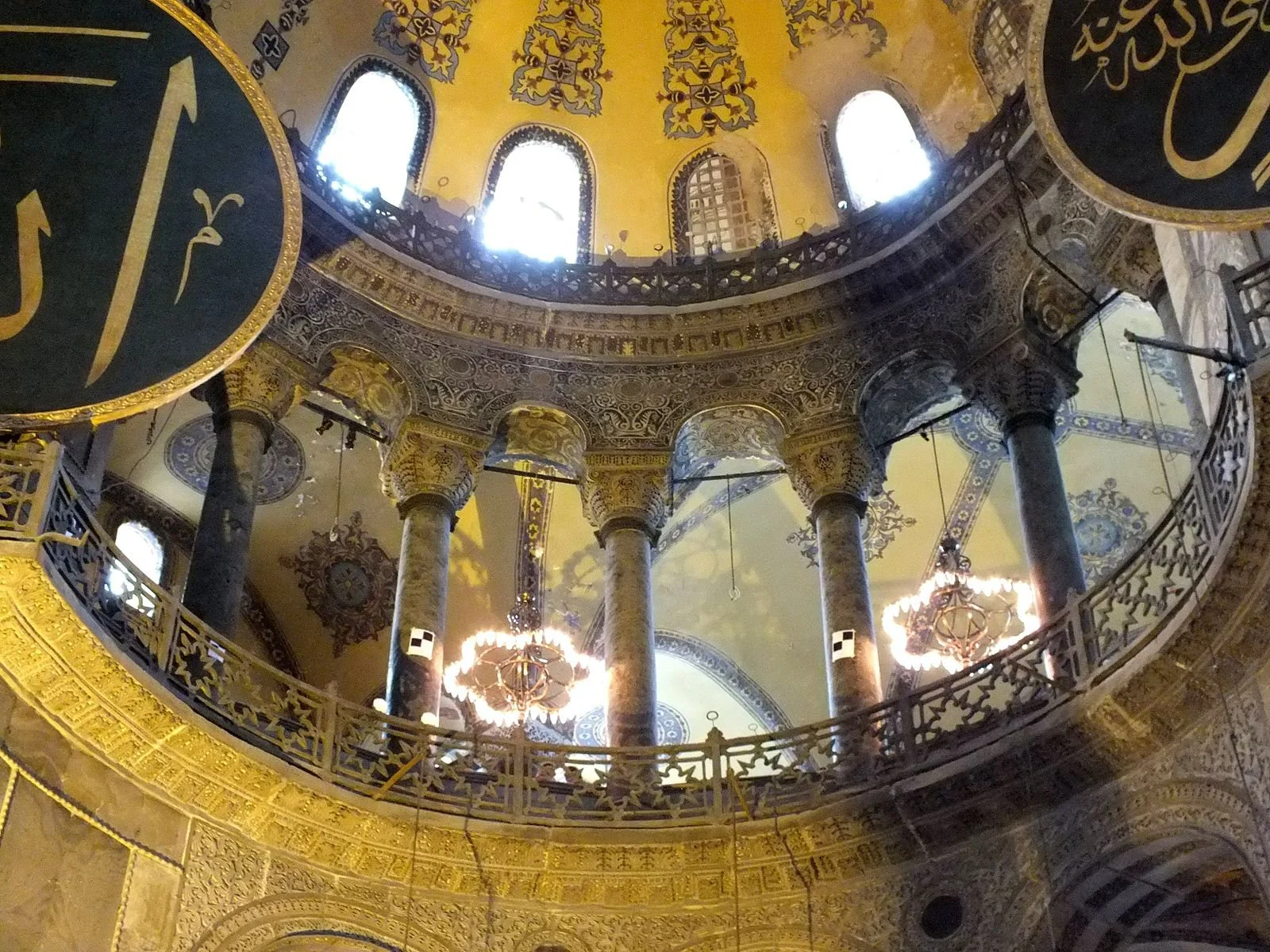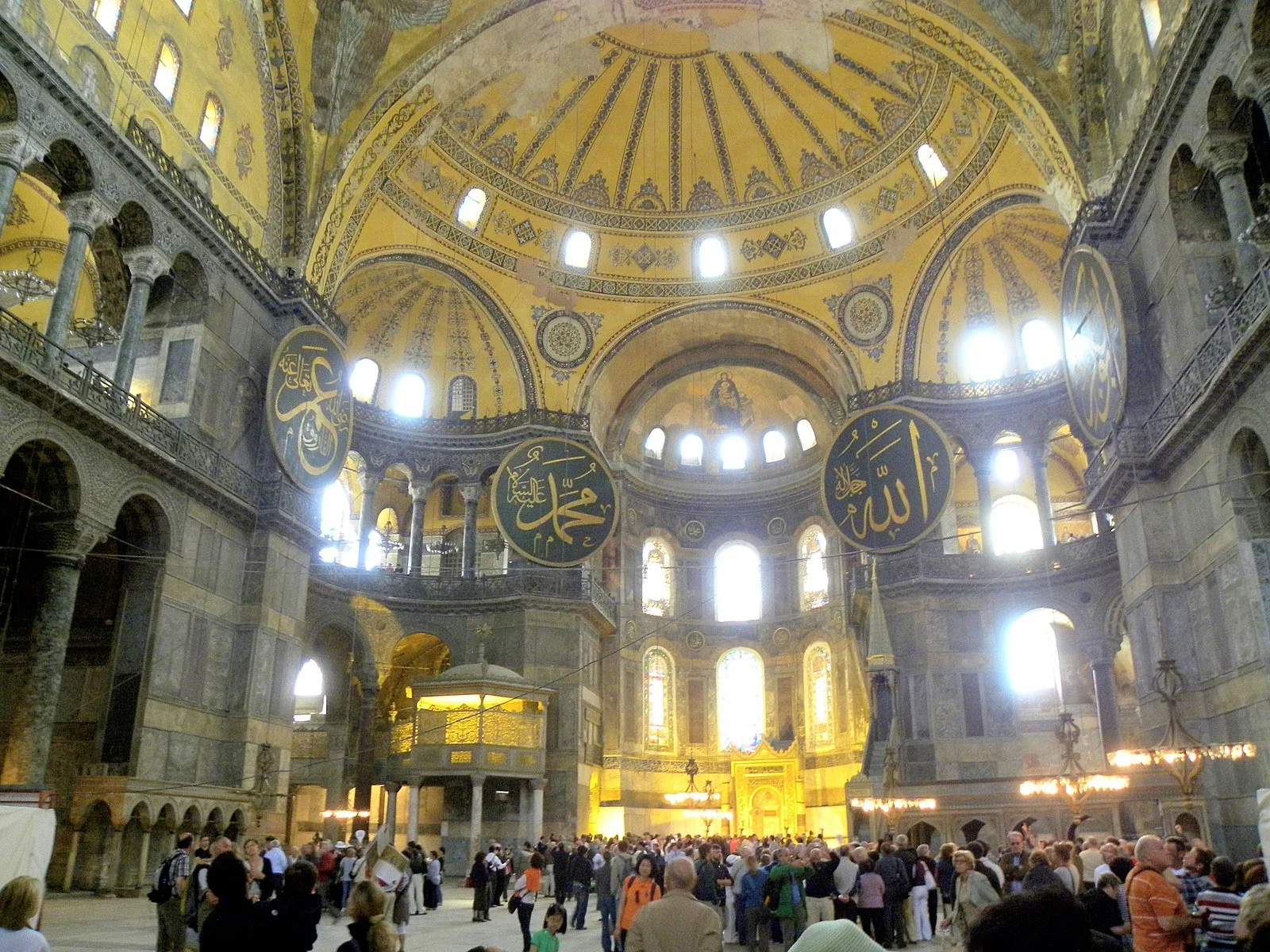Having served as a church, mosque and museum, Hagia Sophia represents both religion and history in Istanbul.
Hagia Sophia. Adli WahidCC BY-SA 3.0.
Built in the 6th Century, Hagia Sophia is the oldest building in Istanbul, Turkey. This ancient structure has been an important spiritual center for both Christians and Muslims, and its history is shown through its architectural features. Here is a deep-dive into the creation of Hagia Sophia, its meaning to different cultures, and how to visit it today.
History
Interior of Hagia Sophia. Wolfgang Guelcker. CC BY 3.0.
Originally named “Megale Ekklesia,” or “Great Church,” Hagia Sophia was built in 360 under Emperor Constantius. After the church was destroyed by riots in 404, it was rebuilt by Emperor Theodosius in 415. During this period, the church received its current name, “Hagia Sophia,” or “Holy Wisdom.” After being burned down during a revolt in 532, the final structure of Hagia Sophia was resurrected under Emperor Justinian I in 537, with some restorations in the 14th century. This version of the church was known as the Cathedral of the Ecumenical Patriarchate of Constantinople, which was a spiritual center of the Eastern Orthodox Church. After the Ottoman Empire took over Constintinople in 1453, Sultan Mehmet II repurposed Hagia Sophia, which served as a mosque until becoming a museum in 1935. In 1985, Hagia Sophia became a UNESCO World Heritage site, giving official recognition its long cherished cultural value.
Controversy
Greek protest against Turkey. Des Byrne. CC BY 2.0.
In 2020, Hagia Sophia was renamed a mosque under the Turkish government. This decision created controversy between Turkey and other nations, as repurposing it as a mosque draws away from the entirety of the structure’s history and the mutual respect between religions. This also strengthened existing tensions between Turkey and Greece, as Hagia Sophia was once part of the Greek Orthodox Church.
Architecture
Dome
Main dome of Hagia Sophia. Osama Shukir Muhammed Amin. CC BY-SA 4.0.
Following St. Peter’s Basilica in Rome, Hagia Sophia is home to the second largest pendentive dome in the world. The main dome of the structure has a diameter of 107 feet and is supported by 4 pendentives, which are large triangular arches that meet in the middle of a structure. These structures are one of the earliestlarge pendentives to ever be made. There are also two semi-domes on each side of the main one, supported by columns.
Columns
Columns in Hagia Sophia. Serafita. CC BY-SA 4.0.
Hagia Sophia has 140 columns, all from different parts of the world. For example, the purple columns supporting the semi-domes of the structure originated in Egypt. There are also green columns from the Artemis Temple in Ephesus, an ancient Greek city. The most prominent columns are made of Verde Antique stone, which was mined from quarries in the city of Larissa, Greece during the Byzantine empire. These columns are 34 feet tall, and its material was used frequently during the 6th century.
Mosaics
Mosaic of the Virgin Mary and Jesus. World History Encyclopaedia. CC BY-NC-SA 4.0.
Originally, Hagia Sophia displayed many Christian mosaics, but these images were covered during the Ottoman Empire. Some of these mosaics depict angels and praise Jesus and the Virgin Mary, while others take the form of emperors such as Justinian and Constantine. One of the most iconic mosaics shows the Virgin Mary holding baby Jesus, and this image remains uncovered today. Created in the 860s, this is the oldest mosaic in Hagia Sophia.
How to Visit
People visiting Hagia Sophia. Magnus Manske. CC BY 2.0.
Though it has reverted to a mosque, Hagia Sophia is still open to the public. Visitors are required to remove their shoes before walking its carpets. Hagia Sophia is open to the public every day of the week, but closes to non-worshipping visitors during prayer hours. Guided tours of Hagia Sophia are also offered through different websites, usually for a fee.
Click here for more Hagia Sophia visitation guidelines.
Alexandra Copeland
Alexandra is a student at The College of New Jersey studying psychology and journalism. She is a lover of coffee, dancing, and visiting new places. Being raised with her Greek culture has inspired her interest in cultural customs around the world. She is a passionate writer and hopes that her work will make an impact in the future.








